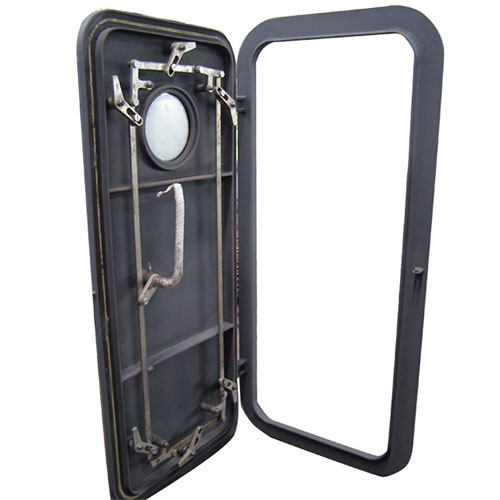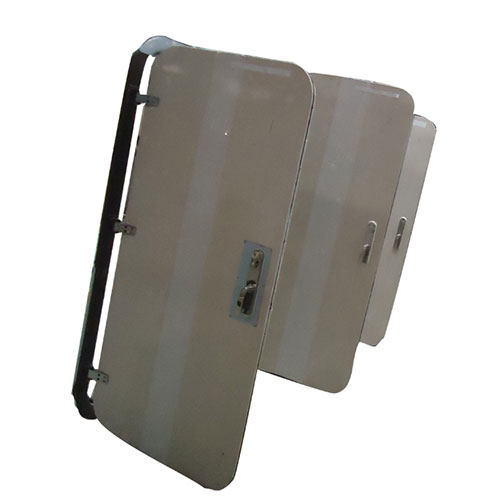Space-saving Designs in Marine Doors
Marine vessels, such as luxury yachts, commercial vessels, naval vessel, etc, are constantly challenged in optimizing space. every square inch counts and inefficient designs could result in cramped spaces, restricted movement and reduced functionality. Marine doors are crucial, not only providing watertight security and integrity, but also in optimizing the available space. In recent years, space-saving designs in marine doors have emerged as an important innovation that improves efficiency and accessibility without sacrificing durability or conformity to the maritime regulations.
The Importance of Compact Design in Marine Doors
Marine structures need to be able to balance strength, security and efficiency with space restrictions. Marine doors, which are the essential access points, need to comply with high performance standards – resisting fire, water or pressure whileoccupying minimal space. Doors that hinge are traditional, although efficient, may not be efficient for tight spaces or those that see a lot of traffic. This has led to the creation of space-saving solutions that are innovative.
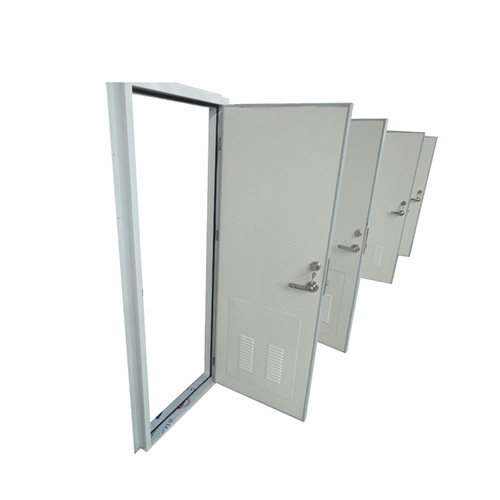
Key Types of Space-saving Designs in Marine Doors
1. Sliding Doors
Sliding doors are among the most frequently used designs for marine architecture that save space. Instead of swinging upwards or outwards the door is able to move horizontally, whether manually or automated. This removes the requirement to have a swing clearance, which makes sliding doors perfect to be used in narrow passageways, control rooms and bridge entry points in which there is a limited space and the circulation is continuous. These marine doors are fire-proof and watertight, based on the purpose and often included in automated systems to facilitate use.
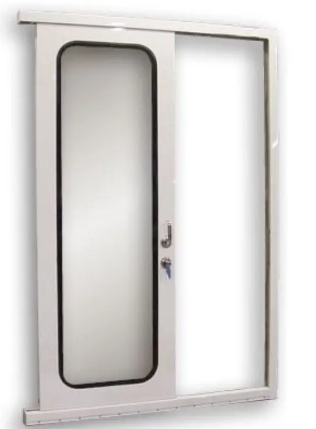
2. Folding Doors
Doors that fold or bi-fold consist of panels that fold in one another when doors open. They provide easy access in a compact size, which makes them ideal for lavatories, cabins, or galley kitchens where doors could hinder the flow of traffic or restrict the layout choices. They offer a compromise between space and accessibility and are often employed when quick accessibility and minimal interference is required in spaces with limited space.
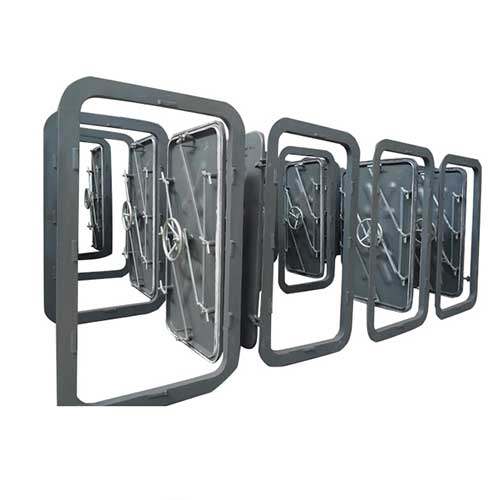
3. Pocket Doors
The pocket doors can be described as a form doors that slide and folds into a hollow inside the wall, which makes them almost invisible when opened. This style is particularly popular in the interior of luxury cruise ships where aesthetics as well as space are most important. Pocket doors remove obvious tracks and projections of the leaf on the door which create a neat and sleek appearance while increasing the amount of space that can be used.
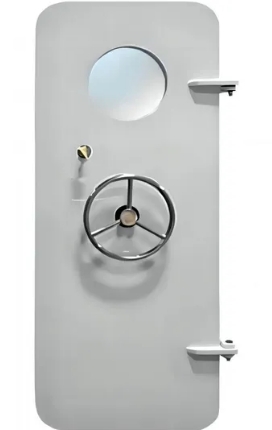
4. Overhead Doors
Overhead doors raise vertically and then retract into a ceiling-mounted enclosure and free up the wall and floor spaces. These doors are usually located in machinery areas as well as garage decks on boats, and storage areas for equipment with limited horizontal clearance. They are constructed with durable materials to stand up to the tough marine conditions overhead doors permit quick operation in situations where swift access is required.
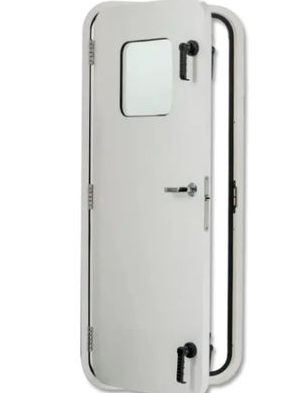
Overhead Marine Door
5. Roller Shutter Doors
Roller shutter doors are made up of interlocking slats that are rolled into a drum that is usually placed over the opening. They are compact, highly durable, and resistant to vibration and corrosion–characteristics that make them well-suited for marine cargo areas, storage compartments, and even exterior access points on workboats. Roller shutters can be operated manually or electrically operated. They provide an effective sealing against harsh conditions, while preserving space.
6. Telescopic Doors
Telescopic doors are constructed with several panels, which move across each other and are stacked onto one side. This kind of door provides the advantages of a larger opening, but does not require the same amount of room as one-panel sliding door. Telescopic doors are perfect for passageways that are larger, especially when the volume of equipment or traffic is high. They they are frequently used in conjunction with automated access control.
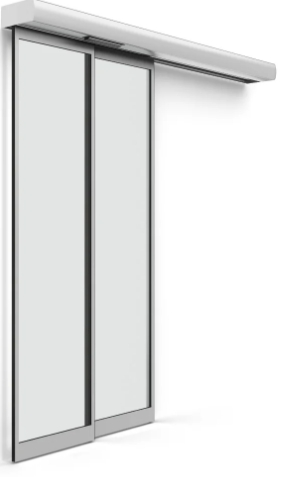
Material and Mechanism Innovations in Space-Saving Marine Doors
Recent advancements in both mechanisms and materials have transformed the performance of marine doors that are space-saving to high-performance, multi-functional components of the contemporary ship’s design. These innovations not only decrease space footprint, but also increase the strength, durability and adaptability of doors for marine use in a variety of operating conditions.
Advanced Materials for Lightweight and Resilient Designs
A single of the more prominent areas of technological innovation is the construction of spaces-saving doors for marine use. Traditional marine steel fireproof doors are usually heavy and susceptible to rust in salty, humid conditions. To tackle these issues without sacrificing performance, companies have adopted modern materials, such as:
- Marine-grade aluminum: Offers an outstanding combination of strength, corrosion resistance and lightweight characteristics. Aluminum doors are ideally suited for folding and sliding systems when smooth, low-resistance operation is needed.
- Reinforced composites: These materials, often made up of carbon or fiberglass and resin binders – are becoming popular as a door material for interior use. These materials can be used to create marine doors with slim profiles, while providing insulation, soundproofing and fire-resistant properties.
- Steel alloys made of stainless steel (AISI 316, etc. ): Still widely employed in fire-resistant and watertight marine doors, however they are often improved by coatings or surface treatments to ease maintenance and prolong the life of doors in harsh marine conditions.
- Highly-performance sealing compounds: The latest space-saving marine doors make use of modern polymer or rubber gaskets that guarantee gas-tight and watertight strength while remaining flexible even under repeated use, vibrations and pressure variations.
The combination of these materials makes doors thinner and lighter. They are also more user-friendly while complying with SOLAS and IMO requirements for security and long-term durability.
Refined Mechanisms for Smooth, Compact Operation
The mechanical components that power or aid in the movement of doors with space saving have seen a remarkable improvement. The objective is to ensure smooth operation in even the most restricted spaces, while also ensuring low energy usage and improved reliability. The key innovations are:
The most precise sliding tracks and rollers Doors that slide and telescopic currently use ball bearing roller systems which are protected from corrosion and designed to provide quiet, low-friction operation. The tracks are designed to withstand constant motion that can be experienced those in rolling and pitching seas.
- Foldable hinge systems with dampers: Folding doors have clever hinge designs that have soft-close dampers, which reduce the force during closing and enhancing safety and durability. Hinges are usually made of corrosion-resistant alloys, or covered with protective coatings.
- Counterbalance and gas spring-assisted lifting: In doors with upward openings and overhead openings Modern counterbalance systems with torsion springs as well as gas struts, allow manual lifting to be more comfortable and lower the chance of strain or injury. They are vital for doors in decks and technical rooms. access points.
- Automated and motorized systems: Many space-saving doors are fully automated, and are integrated with control systems across the entire ship to regulate access and fire control, as well as emergency escape. These systems utilize small linear motors and servos and control interfaces that are smart to ensure stability while keeping an extremely small electrical and spatial footprint.
Smart Integration and Control Compatibility
Beyond structure and motion doorways for marine structures that are space-saving have been becoming increasingly designed to work with ship management systems that are digital. Doors can be linked to:
- Fire detection and suppression systems, for fire detection and suppression which ensure that the system is shut down automatically during the case of fire, to limit the risk.
- Emergency power backup, enabling door function even during main power loss.
- RFID readers and proximity sensors, provide secure and hands-free access control in highly-trafficked or sensitive areas.
- Diagnostics and remote monitoring that allow personnel to monitor the status of doors and react to problems quickly.
This level of control does not just contribute to operational safety, but adds to the benefits of using small, multi-functional door systems in vessels with increasingly complicated layouts.
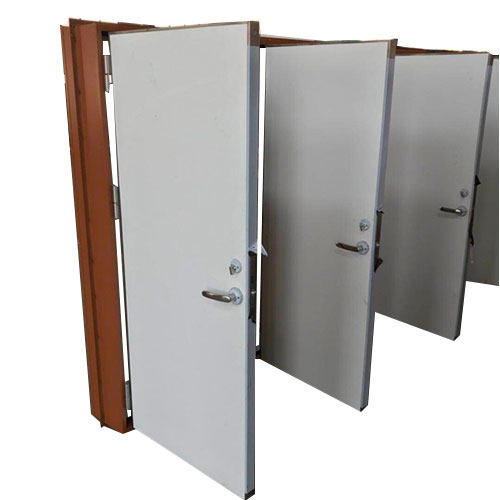
Applications of Space-saving Marine Doors in Different Sectors
This chart shows the way that space-saving marine doors can be designed to meet the operational and spatial requirements of a variety of marine applications.
| Marine Sector | Application Areas | Preferred Door Types | Key Benefits |
| Commercial Shipping | Bridge access, passageways, crew quarters | Sliding, Pocket, Folding | Reduces the size of corridors, and increases workflow efficiency and mobility of crew members |
| Naval Vessels | Control rooms and engine compartments, doors to armory | Sliding, Overhead, Telescopic | Improves access to rapid information and emergency preparedness in compact layouts |
| Offshore Platforms | Equipment rooms, accommodation units | Roller Shutter, Overhead, Folding | It provides efficient access and superior endurance in tough environments. |
| Luxury Yachts | Lounges, cabins, balconies, transitions | Pocket, Sliding, Telescopic | Space is maximized for luxury design, while preserving sleek aesthetics |
| Cruise Ships | Cabins for passengers, restrooms, areas for staff | Sliding, Bi-Fold, Pocket | Improves privacy, accessibility and space comfortable for passengers |
| Research Vessels | Lab compartments, equipment zones | Sliding, Folding, Overhead | Supports technical operations while minimizing interference from space |
| Ferries & RoPax Vessels | Car decks as well as loading ramps and areas for passengers | Roller Shutter, Overhead, Sliding | Facilitates quick loading and unloading as well as the smooth flow of passengers |
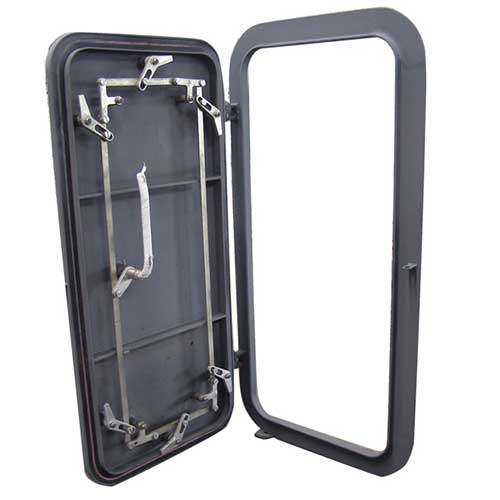
Future Trends in Space-saving Designs for Marine Doors
The next generation of space-saving marine doors will not just minimize physical footprint, but also they aid in the automation of vessels, safety and environmental sustainability. Emerging trends point towards a future in which these doors will be multi-functional systems engineered to support the needs of modern marine architecture in a holistic way.
1. Smart Automation and Adaptive Control Integration
One of the major trends for the future is the more extensive in-built integration of the marine door with smart ship systems. Doors that are space-saving will increasingly be outfitted with sensors and actuators and monitoring capabilities that are real-time which allow them to respond to the onboard environment, such as flooding, fire as well as motion sensing. Intelligent doors can automatically seal or open according to pre-programmed situations, improving safety as well as energy efficiency.
In addition, the ship-wide automation platforms – which are common in modern cruise ships offshore platforms, cruise ships, and commercial vessels, will interface directly via doors to allow Remote diagnostics and predictive maintenance and the ability to control access in a dynamic manner.
2. Advances in Lightweight and Sustainable Materials
As maritime companies seek to decrease the weight of their vessels to improve energy efficiency and emissions compliance Space-saving doors will be incorporating the tiniest and most durable materials. Innovative marine-grade composites, carbon-fiber reinforcements and recyclable thermoplastics are likely to replace steel and aluminum, if possible.
Future marine doors will be built not just for compactness, but also for lifecycle efficiency–minimizing corrosion, extending service intervals, and supporting green building certifications through eco-friendly manufacturing and end-of-life recyclability.
3. Modular and Customizable Configurations
To meet the diverse layouts of vessels and performance requirements In the near future, we will see an increase in the use of modular systems for doors on marine vessels. These doors are constructed in standard segments that are easily modified or redesigned for particular applications, from superyachts to military fast craft.
This modularity will enable ship builders to simplify installation, decrease the amount of time required to modify the ship and streamline global maintenance. This will also facilitate the retrofitting of older vessels with door systems that are modern and are space-saving and provide safety benefits.
4. Hybrid Motion Mechanisms for Multi-Functionality
Doors that are emerging are shifting towards hybrid systems, like doors that use telescopic as well as folding motions or vertical sliding and partial rotation. These sophisticated yet compact mechanisms will enable doors to adjust to structural irregularities as well as provide bigger openings or change operational modes based on whether the vessel is underway or docked.
A door, for instance, could be used as a fold-down bulkhead for navigation, and then convert into an open-air partition when docking or loading. This flexibility is particularly useful when you have multi-purpose decks, or spaces for cargo that convert.
5. Enhanced Safety and Compliance
One of the most promising developments in the area of space-saving doors is the application of active sealing technology. Future doors may include magnetically activated or inflatable seals that automatically open after a door has been closed, providing watertight and airtight security with no need to use heavy locking mechanisms.
This enables thinner and smoother door frames, and still meet IMO, SOLAS, and standard safety requirements of the class society. These systems will be crucial for environments such as engines areas, pressurized zones or fire containment zones in areas where space is restricted but the safety of the system cannot be damaged.
6. Human-Centered and Barrier-Free Design
In a world where comfort of passengers and ergonomics of crew members become more prioritised, future marine doors will be based on an improved design philosophy that is more user-friendly. Doors that are space-saving will have closed-off doors that are quieter as well as soft-touch surfaces. even touch-free or gesture-controlled opening mechanisms, which are especially useful in public spaces and the sterile environment of research vessels or medical support vessels.
Incorporating universal accessibility standards, these doors will be designed for barrier-free operation–accommodating wheelchair access, reducing fatigue, and supporting inclusive marine environments.
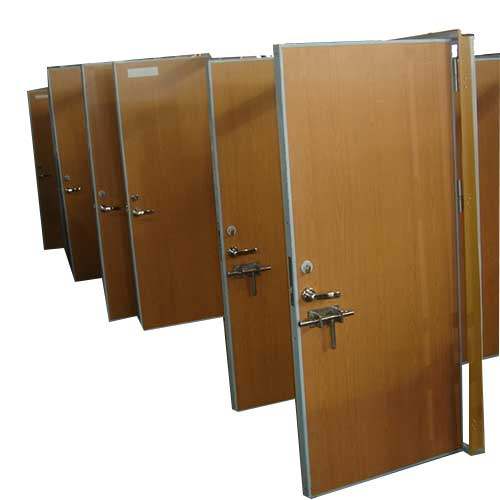
Summary
Designing space-saving marine doors is crucial to optimize vessel layouts, enhancing the mobility of crew members and ensuring that the vessel is in compliance with the maritime safety standards. From folding and sliding doors to telescoping and roll-up systems, engineers are constantly innovating to meet the needs for modern vessel construction. By choosing the appropriate door type for the each applications, ship designers can maximize effectiveness without sacrificing function or security.


